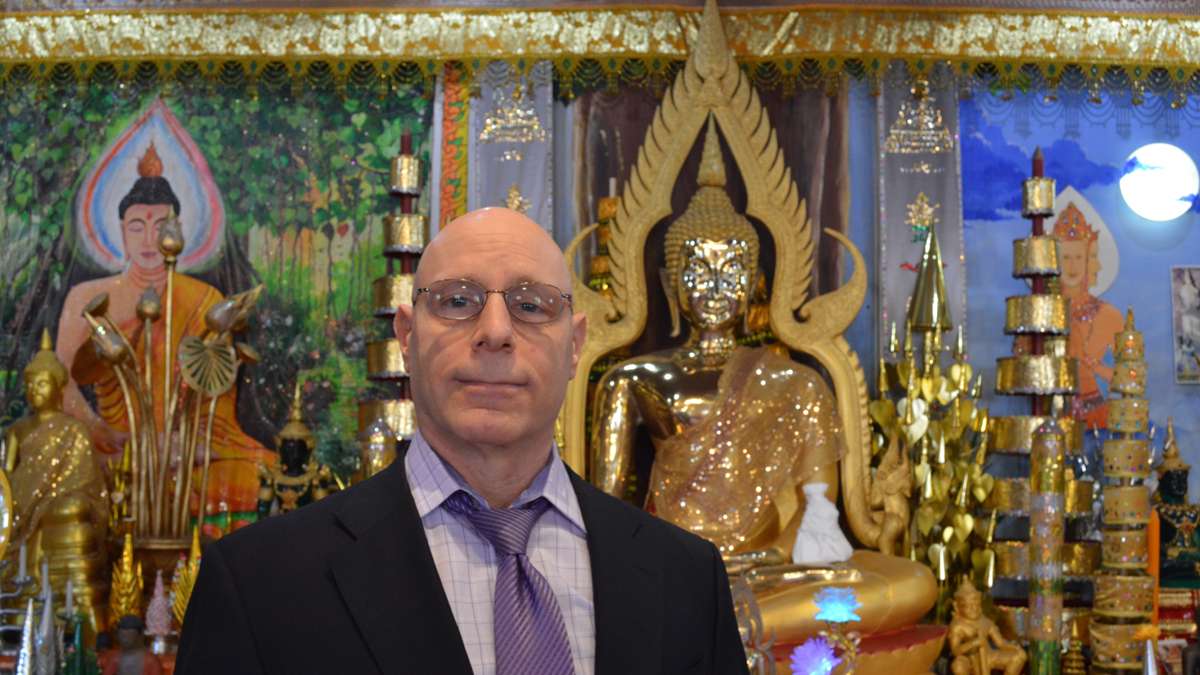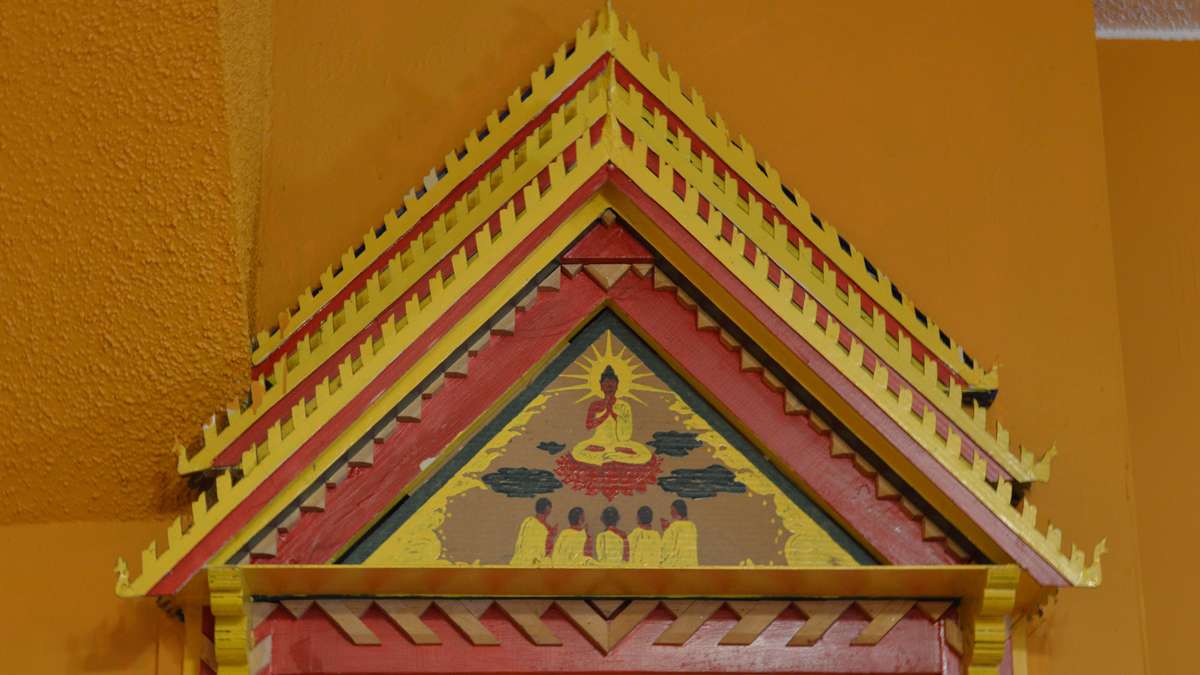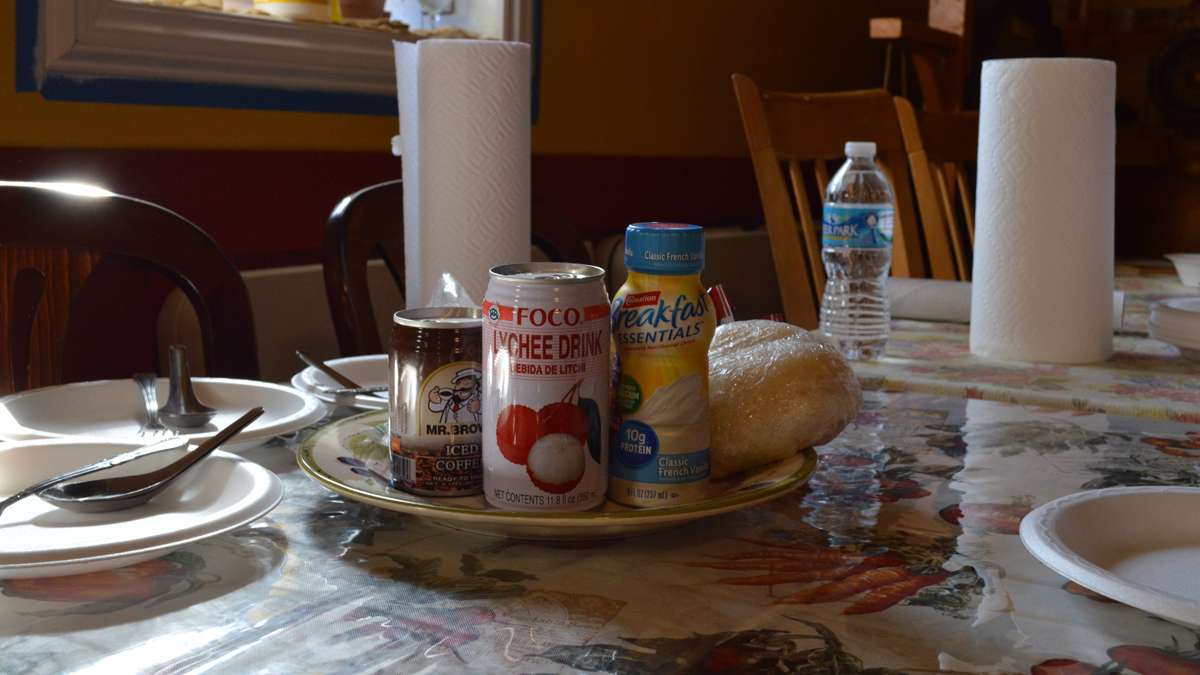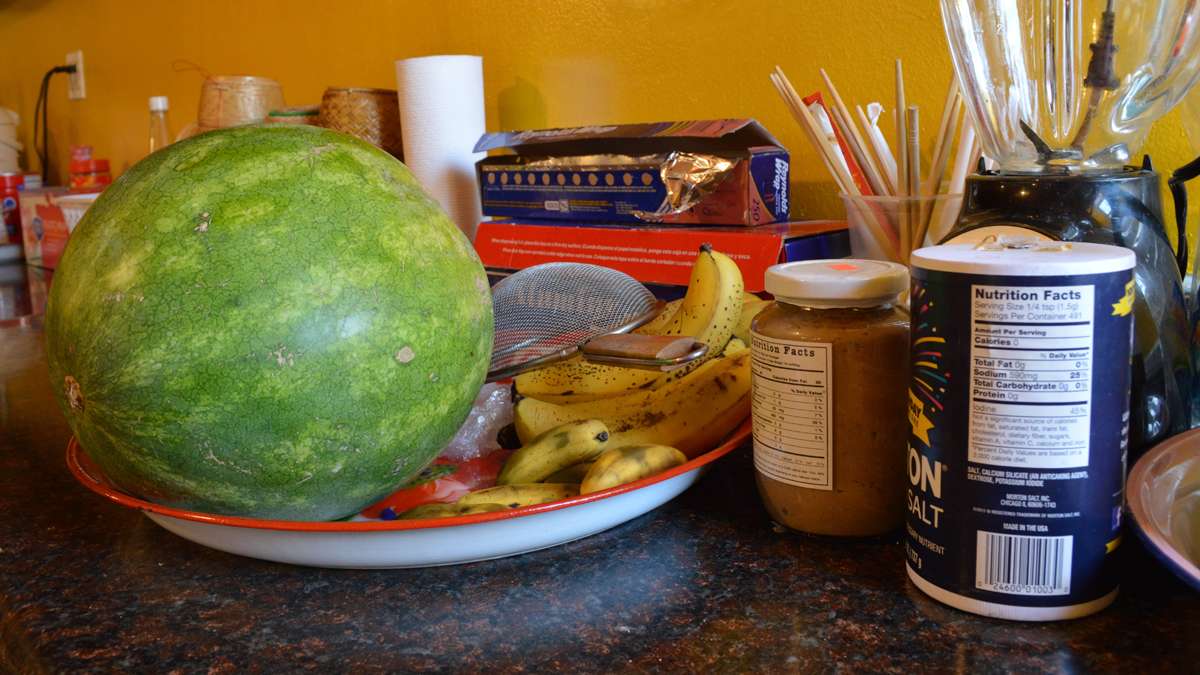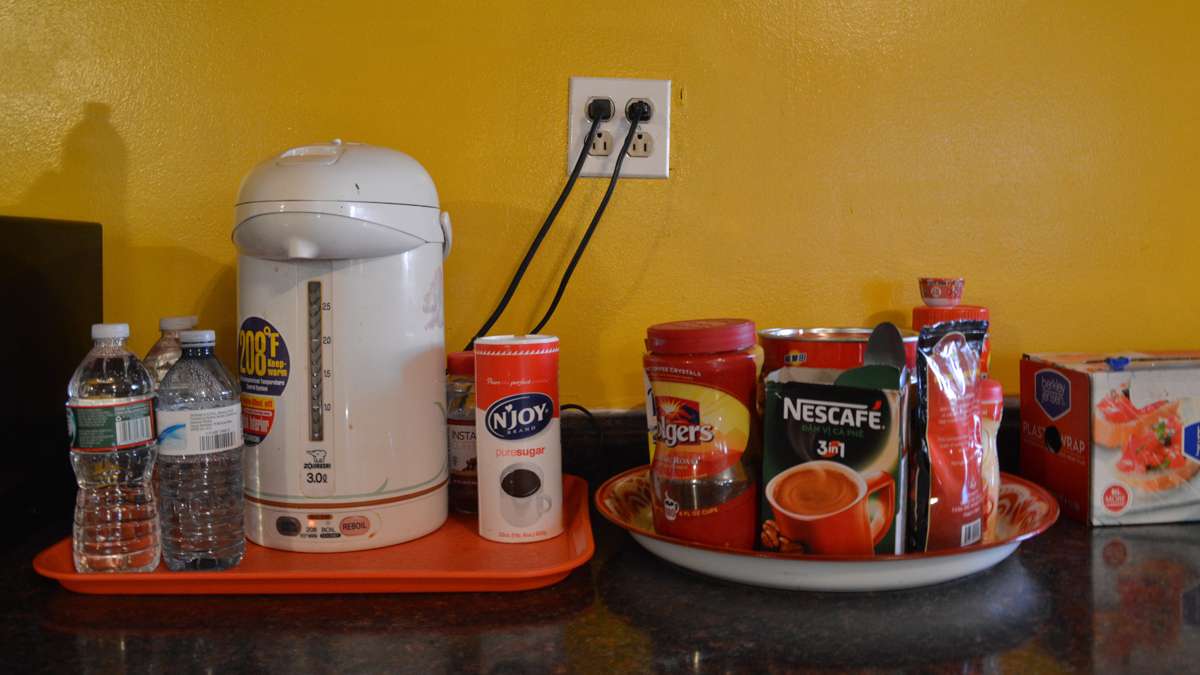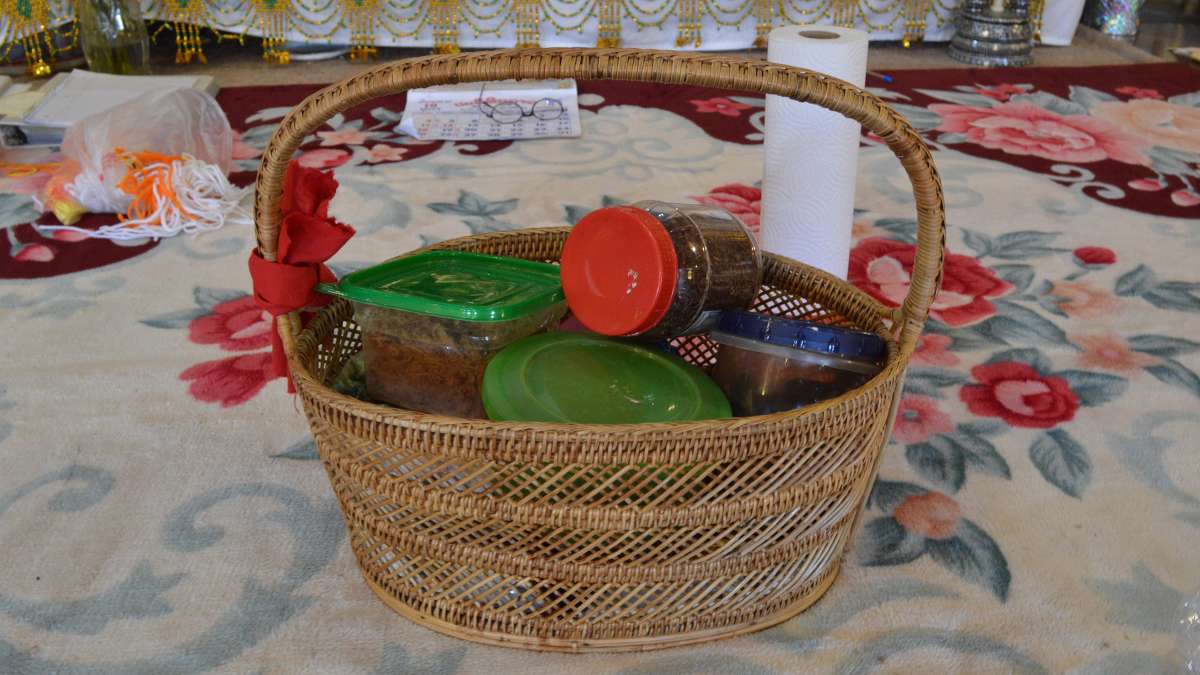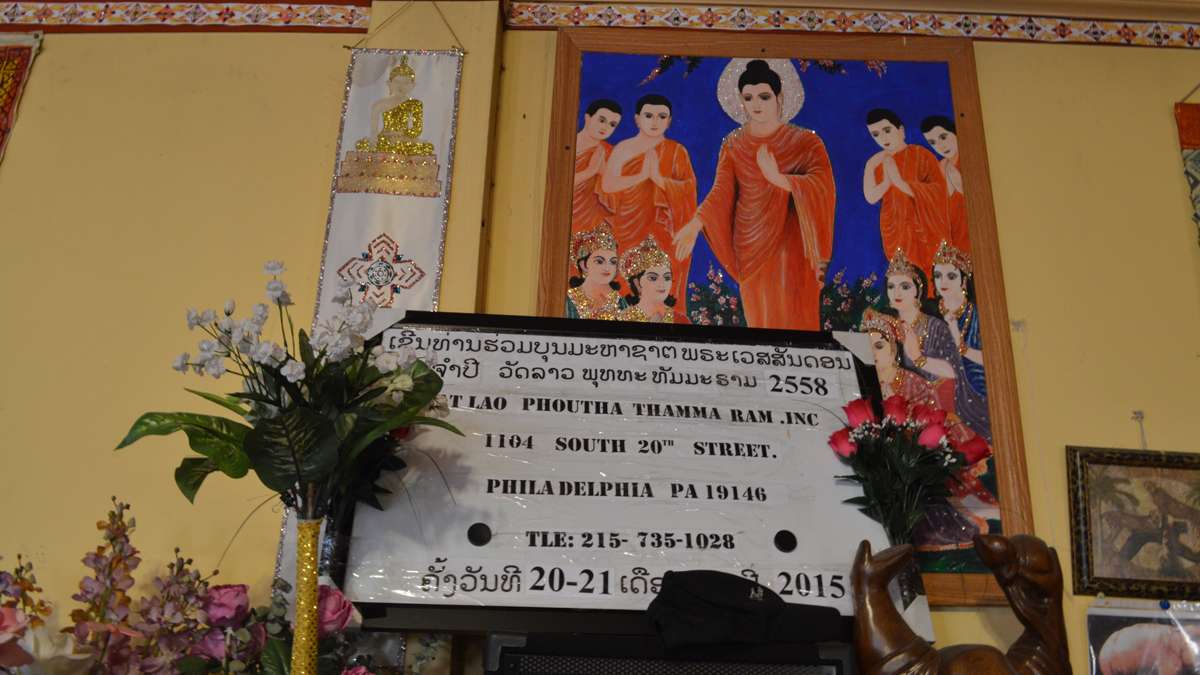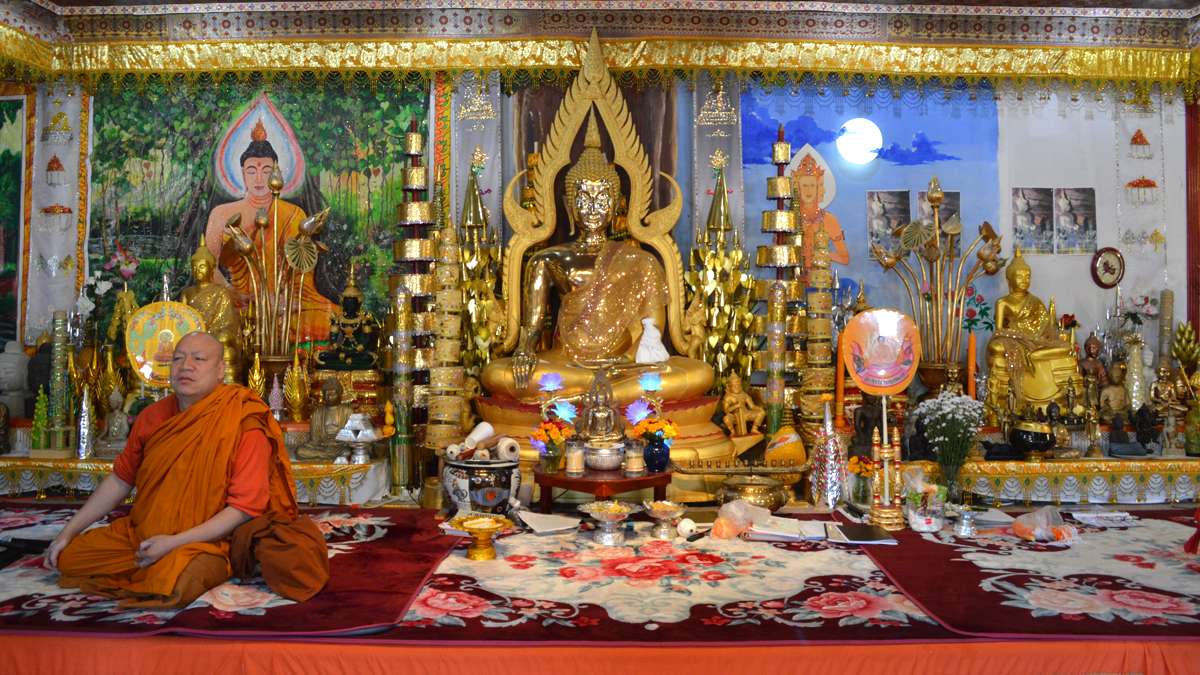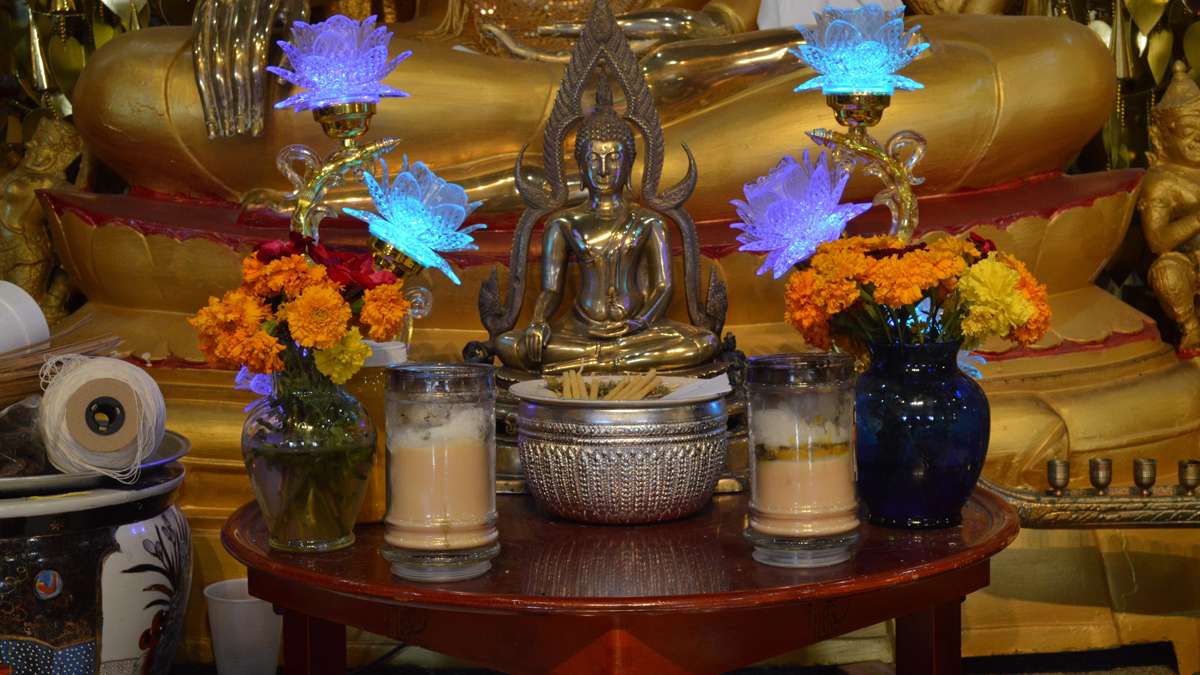Nearly killed by kindness: Donated food hurt monks’ health
ListenPhaithoun Feuachanthala looks like a man at peace when he’s chanting. He’s sitting at the feet of a big Buddha statue. His round head is shaved. He is wearing bright orange robes. His eyes are closed.
Phaithoun Feuachanthala looks like a man at peace when he’s chanting. He’s sitting at the feet of a big Buddha statue. His round head is shaved. He is wearing bright orange robes. His eyes are closed. Feuachanthala is originally from Laos, and has made a temple called Lao Proutha Thammaram in South Philadelphia his home.
It’s located in a scrappy part of town, surrounded by building supply stores and car repair shops, but inside, you can easily imagine you are somewhere in Southeast Asia.
The walls are painted in vibrant hues of red and orange. The floors are lined with thick carpets with intricate patterns. Buddha statues in all shapes and sizes are everywhere. And under Feuachanthala’s leadership, several monks chant mantras in seemingly endless repetitions.
But — the 65 year old’s chanting almost came to a sudden end last year.
“It just happened, spontaneously,” he said with the translation help of temple member Suticha Kiatkosolkol. “He got the tight on his chest and got all the sweaty. People in the temple brought him to the hospital and he got diagnosed; it’s a heart attack.”
Kiatkosolkol is a nurse who used to work at Philadelphia College of Osteopathic Medicine (PCOM), and she told a former colleague about what happened to the head monk.
“Frankly I was surprised, because I always associate the lifestyle of a Buddhist monk with being stress-free and peaceful,” recalled Brad Rosenfield, a clinical psychologist at PCOM. He was intrigued by what he had heard and decided to investigate.
He learned that the monks at the temple, six of them, who live upstairs on simple cots, get by solely on donations from community members.
“The food that the community members donate is the food that they think is very special, because they love and respect the monks,” said Rosenfield. “So, the type of food that they think is very special is the kind of food that they might bring to a party.”
The community around the temple is mostly immigrants from Laos. Food is a big part of life — and it’s best in abundance. “It’s just an explosion of food, more food than anybody could possibly eat.”
Some of the favorites include sweet sticky rice, fried spring rolls, succulent pieces of pork.
“I have seen a lot of the fry stuff, I have seen a lot of the sweet stuff,” said Suticha Kiatkosolkol who explained that some people bring food to the Temple every day.
But, food wasn’t the only culprit. As Brad Rosenfield did more health detective work — he also learned that the monks spend most of their days in seated meditation.
“In addition we found out that the monks did not have health insurance, so they were not getting health care, this in addition to the unhealthy food and the sedentary lifestyle is like the perfect storm for cardiovascular disease,” he explained.
Rosenfield enlisted the help of his colleagues and students at Philadelphia College of Osteopathic Medicine. Community health work is part of the institution’s mission. They volunteered their time to get the monks enrolled in Medicare. They observed what kinds of foods people were bringing to the temple, and talked to them about healthier options, and made posters with pictures to get around language barriers.
He was worried at first about how people would react — but he says out of love for the monks, most people wanted to do whatever it took to keep them healthy.
“We have moved from the fatty foods to more chicken, more fish, grilling and baking rather than frying, which is ubiquitous.”

Donated food at the temple. (Maiken Scott/WHYY)
Rosenfield and his colleagues have also broadened their efforts to make the whole community healthier. They recently helped set up a health fair at the temple.
A huge pot of Vietnamese noodle soup bubbled in the corner, the air smelled of basil and lime, and people lined up for flu shots, diabetes screens and blood pressure checks before sitting down for a bowl of pho. Osteopathic manipulation was a big hit with the crowd, it addresses problems in the neck, back and spine.
Temple president Kounesone Vilayphanh says the temple is a trusted place – and creates a bridge between separate worlds. “It’s two different generations talking to each other, this is where they find comfort of coming to talk about their problems,” he said.
Vilayphanh is alluding to some of the strong beliefs held by older members of the temple, which can make buying into western medicine difficult. It’s something Brad Rosenfield has come across frequently.
“If you are having a heart problem, stomach problem, it means the spirits are angry, you have offended them in some way,” he said.
Rosenfield explained that he works around this by saying that the spirits are offering a solution, or an opportunity, in the shape of a few nice people in white coats.
The monks have been responding to his health messages. Head monk Phaithoun Feuachanthala said he’s given up most of his beloved sticky rice, and eats a lot more brown rice. He’s cut out high fat foods, and enjoys more vegetables. He also walks more, and exercises.
He recently had his first check up with a primary care doctor, another sign that he’s committed to staying healthy.
PCOM’s “healthy monk project” at the temple is picking up international interest — Rosenfield recently spoke at a conference in Thailand – where monks are experiencing similar health issues.
Rosenfield says getting the South Philadelphia monks into exercising and nutrition has had a ripple effect – since they are beloved role models, community members have started to embrace the new mantra of healthy living.
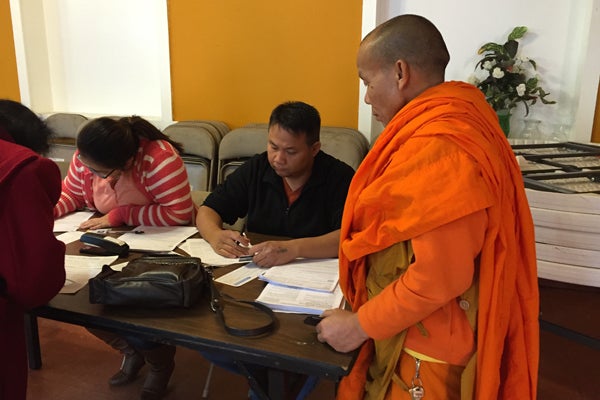
One of the monks at the South Philadelphia temple fills out paper work for a flu shot. (Maiken Scott/WHYY)
WHYY is your source for fact-based, in-depth journalism and information. As a nonprofit organization, we rely on financial support from readers like you. Please give today.





